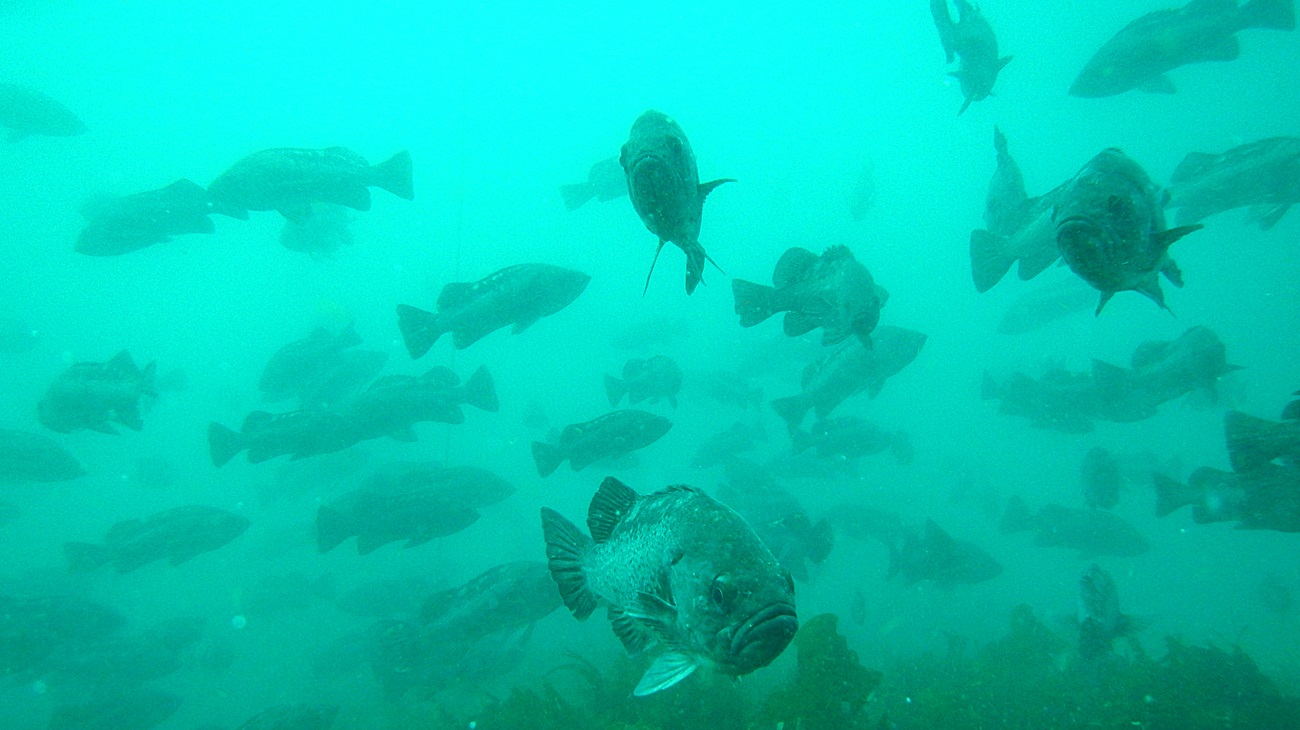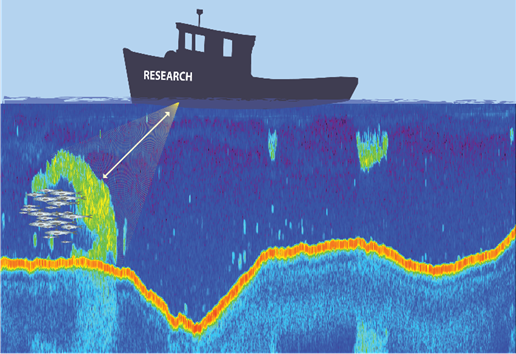Using Acoustics to See
The oceans cover 70 percent of the earth’s surface, and it is fairly tough to know what lies beneath — let alone determine the number of fish that live there. So, researchers use numerous techniques to try and get an idea of what lives below the surface.
Hook and line, trawl, video and SCUBA surveys are all ways of sampling fish. Combinations of these techniques are used in various places along the West Coast of North America to survey fish. Most of these techniques tend to target species that live closer to the bottom. But what about the species that live higher up in the water column? That’s the question that has plagued West Coast fish scientists. Compounding the issue is that many of the largest West Coast data gathering efforts on fish are done using trawls — which not only are extractive, but are unable to be used in shallow, nearshore rocky habitats where many of Oregon’s fish live.
Acoustic surveys may offer a solution to the challenges of sampling mid-water fish species in these shallow, rocky habitats. Last week, some of our staff along with some of our colleagues at ODFW’s Marine Resources Program had the opportunity to take a class on this research technique.
Acoustics is the science of sound. Fisheries acoustics works by using sophisticated sonar equipment to transmit pulses of sound into the water and these sound waves reflect off objects, such as fish or the bottom of the ocean. Fish finders have been around for a long time and work well to help fishermen locate fish. However, using sonar to quantitatively count fish or measure fish biomass in a precise and consistent fashion is challenging. Recent advancements in precise and affordable sonar equipment, and data processing software, provide powerful tools for fisheries research. Most importantly, this non-extractive research technique may allow researchers to count mid-water fishes in rocky nearshore habitats. The Marine Reserves team is excited to explore how this research might be integrated into existing marine reserves monitoring.
ODFW’s Marine Resources Program is currently using acoustics in several projects, including: developing nearshore rockfish surveys; assessing herring populations; and mapping bottom habitats and bathymetry (water depths) in Oregon’s nearshore ocean and estuaries.
Fisheries acoustics works by transmitting sound pulses. Researchers read the pulses in the form of an echogram (shown at left). Echograms show schools of fish (green and yellow blob) and also the seafloor (red and yellow band of color). This type of research can be used to inform fisheries science, along with habitat and bathymetric science.

